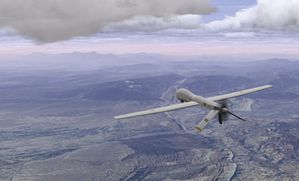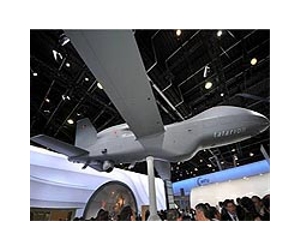photo defencetalk.com
Jul 13 2011 trdefence.com
Roketsan is completing development of a trio of guided anti-armour weapons
Turkish Land Forces Command is the main customer, but the missiles will be marketed for exports
Since the mid-1990s Turkey’s Roketsan has firmly established itself in the design, development and production of unguided surface-to-surface rockets. During the past decade, however, the company has ventured into the more complex and demanding guided-weapons business with the development of three anti-armour systems.
All three are being manufactured under contract to the Turkish Land Forces Command (TLFC) with Roketsan as the prime contractor, and will also be offered on the export market. Several other Turkish companies are involved in the programmes, including Aselsan.
Cirit
In 2004 Roketsan began development of a 2.75-inch semi-active laser-guided missile (SALGM) called Cirit, which was originally the name of a Turkish cavalry-rooted sport played for many centuries. It was also sometimes called Jereed, meaning ‘Javelin’ – also the name of the Raytheon-Lockheed Martin man-portable fire-and-forget anti-tank guided weapon [ATGW] system. Cirit was intended to provide the TLFC’s AH-1P Cobra and AH-1W Super Cobra attack helicopters with a precision attack capability.
Rather than upgrading its existing 2.75-inch unguided rocket, Roketsan elected to develop a new missile that could be launched from MIL-STD-810 F- and MIL-STD-464 A-compatible M- and LAU-series launchers, which are widely deployed.
Cirit has an overall length of 1.9 m and a launch weight of 15 kg. Minimum range is 1,500 m and maximum range is 8,000 m.
The SALGM has a conventional layout, with a passive SAL seeker installed in the nose, surmounting the control unit with four swing-out control surfaces, which is in turn followed by the guidance section and power source.
Further back is the multipurpose warhead, which provides a combined anti-armour, anti-personnel and incendiary effect. According to Roketsan, this is optimised to neutralise high-value soft or semi-hardened targets.
The rear of the SALGM contains the rocket motor, which is insensitive munition (IM)-compliant and has a reduced smoke signature. It is connected to the rear section by a roll bearing that enables it to rotate in flight.
There are four small stabilising surfaces at the very rear of the missile immediately in front of the exhaust nozzle.
During deployment, the gunner designates the target prior to launch, after which the rocket relies on a MEMS (micro electromechanical system)-type inertial measurement unit in combination with terminal laser homing.
According to Roketsan, Cirit has a high probability of hit on a 3×3 m target at maximum range.
First tests of Cirit were carried out in 2006, with development and flight qualification completed in 2008. Low-rate initial production has already commenced and will ramp up to full-rate production in 2012.
The company says that nearly 100 Cirit missiles of different configurations were launched during the extensive development and qualification tests. These included ballistic, control and guidance test missiles, plus qualification missiles.
As the SALGM is longer than the M- and LAU-series pods, Roketsan has developed a new launch pod and a new canister in which Cirit is delivered as an all-up round. The latter is loaded into either a two- or a four-round launch pod, which is more robust against environmental conditions than a standard launcher and easier to load and unload.
Cirit can additionally be fired from a ‘smart’ launcher, which has a MIL-STD-1760 interface. This can hold two or four SALGMs and contains all of the control electronics, enabling it to be rapidly integrated onto a number of helicopters that are required only to have a MIL-STD-1760 interface.
Roketsan signed an agreement with Turkish Aerospace Industries (TAI) in May 2011 for the integration of its Cirit Smart Launcher System on the T-129 attack helicopter, to enable data transfer between the missile and the helicopter launch platform.
Also in May, Roketsan signed a memorandum of understanding with Eurocopter for integration of Cirit on the EC635 helicopter, tests of which are planned for an unknown date.
UMTAS
Development of the UMTAS (Uzun Menzilli Tanksavar Fuze Sistemi) long-range air-launched ATGW began in 2005 with the Turkish Undersecretary of National Defence’s award to Roketsan of an initial TRY50 million (USD30.53 million), 26-month Phase I study contract. Phase I covered concept work, including subsystems such as missile propulsion, guidance and warhead.
The ATGW will be the main armament of TAI’s T-129 attack helicopter, which is a further development of the AgustaWestland A129 Mangusta. It is expected that 51 T-129s will be built to supplement the currently deployed AH-1P and AH-1W attack helicopters used by the TLFC.
The UMTAS missile is 1.8 m long and 16 cm in diameter. Launch weight is 37.5 kg and range is 500-8,000 m.
Roketsan received the Phase II contract in mid-2008. First helicopter trial launches have taken place from an AH-1P, which is being used as a testbed for the programme. Safe separation and jettison tests have also been carried out.
The launcher has a military-standard interface and weighs 60 kg. The T-129 attack helicopter would typically carry two launchers, each with four UMTAS missiles, and two launch pods with two or four Cirit 2.75-inch missiles each.
Aselsan has developed a pedestal-type launcher with four UMTAS missiles in the ready-to-launch position. This could be installed on fast attack craft or patrol boats.
In addition to lock-on-before-launch and lock-on-after-launch operational modes, UMTAS can be used against masked targets. The firing envelope enables an off-boresight target engagement.
UMTAS has completed ballistic and control test firings and is undergoing guided firing tests.
Although the first application of UMTAS will be airborne, it is also suitable for some land- and sea-based platforms.
OMTAS
A new weapon known as OMTAS (Orta Menzilli Tanksavar Sistemi) portable medium-range ATGW has grown out of UMTAS and shares several of its subsystems. These include: a nose-mounted uncooled imaging infrared (IIR) seeker developed by Aselsan; a tandem HEAT warhead optimised against targets fitted with explosive reactive armour (ERA) – the first warhead neutralises the ERA, thereby clearing a path for the larger main charge; a duplex RF datalink for uplink-downlink between the user and missile command; and other electronic subsystems.
Roketsan received an initial Phase I design contract for the OMTAS ATGW in April 2007, which it fulfilled by the end of 2009.
The system consists of a missile in its launch tube and a tripod with associated control unit and sighting unit (SU), the latter two systems together weighing about 55 kg.
The OMTAS missile has an overall length of 1.68 m and the same 16 cm diameter as UMTAS, but is slightly lighter at 35 kg, including launch tube. It has four flip-out control surfaces at the very rear and six flip-out wings about two thirds of the way down from the nose.
It has a minimum range of 200 m and maximum range of more than 4,000 m. Its solid-propellant HTPB (hydroxy terminate polybutadiene) rocket motor – also developed by Roketsan – is IM-compliant.
The SU features a thermal camera, TV camera, digital magnetic compass and laser rangefinder. It can be removed and used as a standalone observation device, providing an all-weather target battlefield surveillance capability.
OMTAS can be launched from within a confined space. It has fire-and-forget and fire-and-update modes of operation, as well as direct-attack and top-attack options for masked targets.
Although the first version of OMTAS will be tripod mounted, the ATGW can also be integrated onto tracked and wheeled platforms. During transportation and field deployment each end of the launch tube is fitted with a protective cover.
According to Roketsan, first missiles have already been successfully test fired without the IIR seeker and all-up firings are due in 2012, with design freeze scheduled for late 2012.
Ballistic performance trials have also been completed, as well as control and guidance characteristics using control test vehicles.
Full-scale development (Phase II) is still in progress in line with the original schedule, with qualification expected to take place in 2013 and production (Phase III) to commence in 2014.












/http%3A%2F%2Fwww.hurriyetdailynews.com%2Fimages%2Fnews%2F201304%2Fn_45107_4.jpg)
/http%3A%2F%2Fwww.hurriyetdailynews.com%2Fimages%2Fnews%2F201304%2Fn_45039_4.jpg)








